"The film opens with an introduction to some of the animals and insects that may be found in the remote countryside, all enjoying themselves in the warm sun. Suddenly a storm gathers and the wild life begin to show anxiety a sort of expectancy as the trees respond to the winds. The fury of the story is upon us - lighting, thunder, wind, rain. The elements are present in full force. Soon it is spent and quietude is again part of the country. A simple episode of nature, but told with action, feeling, and sound, coordinated into a wonderful storm. This is will be included in the Package" PSA Journal, Oct. 1962, 33.
"Depicts in detail the making of a silver coffee pot by silversmith George Bennett of W.A. Carmichael's shop in Victoria. Won honourable mention in the amateur category at the 1952 Canadian Film Awards" (Duffy, 182).
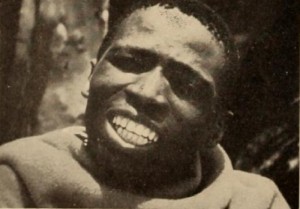
"Through the eyes and experiences of Matsela, a statuesque native of Basutoland, South Africa, Lewis Lewis reveals a stirring story of the triumph of modern agricultural science over the warring elements of nature. The account of how Matsela and his people all but perish in the dust bowl created by malevolent storms and drought, how he studies under a government program of soil reclamation and triumphantly puts his new training to work, provides an absorbing drama and an enlightening document on one of the world's grave problems. Although dealing with literal facts, Mr. Lewis dramatizes the incidents in his story with telling skill. Superb camera work and an attractive variety of viewpoints aid the dramatic effect, while a fascinating score of native songs further enhances the presentation. Save as a scientific record, the film is somewhat overlong, with the second of three 900 foot reels regrettably slow paced after the swift excitement of the opening chapter." Movie Makers, Dec. 1949, 455.
"An outstanding example of what may be done with ordinary 16mm. equipment in the factory is to be found in The Story of Maytag, a black and white industrial film made by Fred Maytag, II. The problems of picturing the manufacture of washing machines in complete detail involved some tremendous lighting difficulties. Mr. Maytag handled these with ease, and throughout the film there is the conviction that the clear, clean photography scarcely could be improved. While the film was designed for use within the sales organization, the procedure of manufacture is so clearly pictured that it is not only comprehensible to the layman but interesting as well." Movie Makers, Dec. 1936, 548-549.
A nature documentary on Bees.
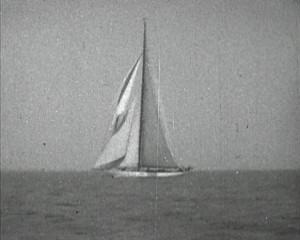
"One of a series of films recording the travels of the schooner Elver, her owner V.B. Harrison, crew and guests. Scenes are shot from the Elver including adjustment of sails, sea, waves, buoys, coastline and passing boats, sometimes close enough to see crew in detail." (EAFA Database)
"This picture was a finely photographed record of water from the ocean to the clouds and back to the ocean again through its various stages. His photography rated high." American Cinematographer, Dec. 1934, 377.
"The one reel film, Water, is a pleasant blending of plan and montage. In it, Howard Demarest, ACL, has traced what may be termed the life cycle of water — from its restless abundance in the great oceans, its radiant journey to banking clouds, the return in rainfall, until, through the coursing of streams and rivers, it blends once more in the sea. Parts of this great, natural continuity Mr. Demarest had on film before the present picture was definitely conceived. Other parts he made following the conception, sometimes to fill it out, again to improve it with retakes. In all these deftly integrated sequences his photography is consistently crisp, sparkling and steady. In many of the scenic views it approaches perfection in beauty of composition and lighting. Attractive and well worded titles round out a piece of work that is definitely superior." Movie Makers, Dec. 1933, 522.
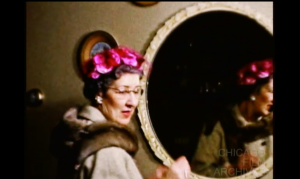
"An amateur film made by and starring the husband and wife duo, John & Evelyn Kibar. John is frustrated with Evelyn’s hat shopping habits. To distract John’s frustrations, Evelyn surprises John with a cake. Title cards with dialogue are dispersed throughout the film." Chicago Film Archives
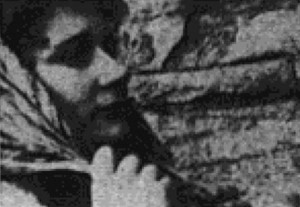
"The Stray is a well written little story concerning a lonely little woman who returns to her husband, but finds he wants no more to do with her, for reasons explained as the story unfolds. Its ring of sincerity, coupled with good acting on the part of both the woman and her husband, was most surely the primary basis for the film landing in the top ten" PSA Journal, Aug. 1967, 36.
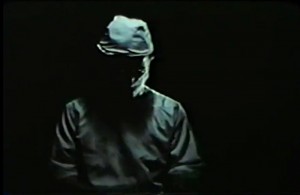
"Filmed by Arthur H. Smith of San Francisco, the story opens with Jackie, a lad of 4 years, playing on the sidewalk near his home. Observing a kitten crossing the street, his natural inclination toward pets impels him to run into the street after it. An unseen car bears down upon the boy and the driver is unable to avoid striking him down. Jackie is rushed to the hospital where his life is saved with difficulty, although he will be permanently crippled. The doctor advises Jackie's parents that although he has survived the operation, the lad has only a short time to live." Home Movies, Dec. 1946, 749.
Total Pages: 203